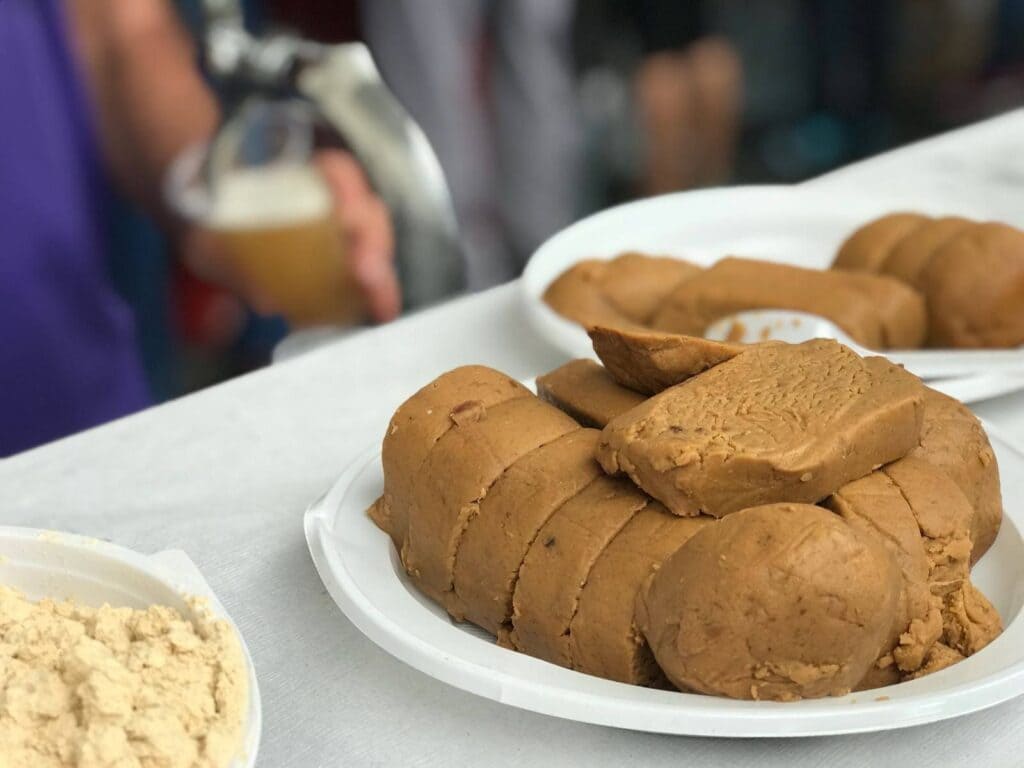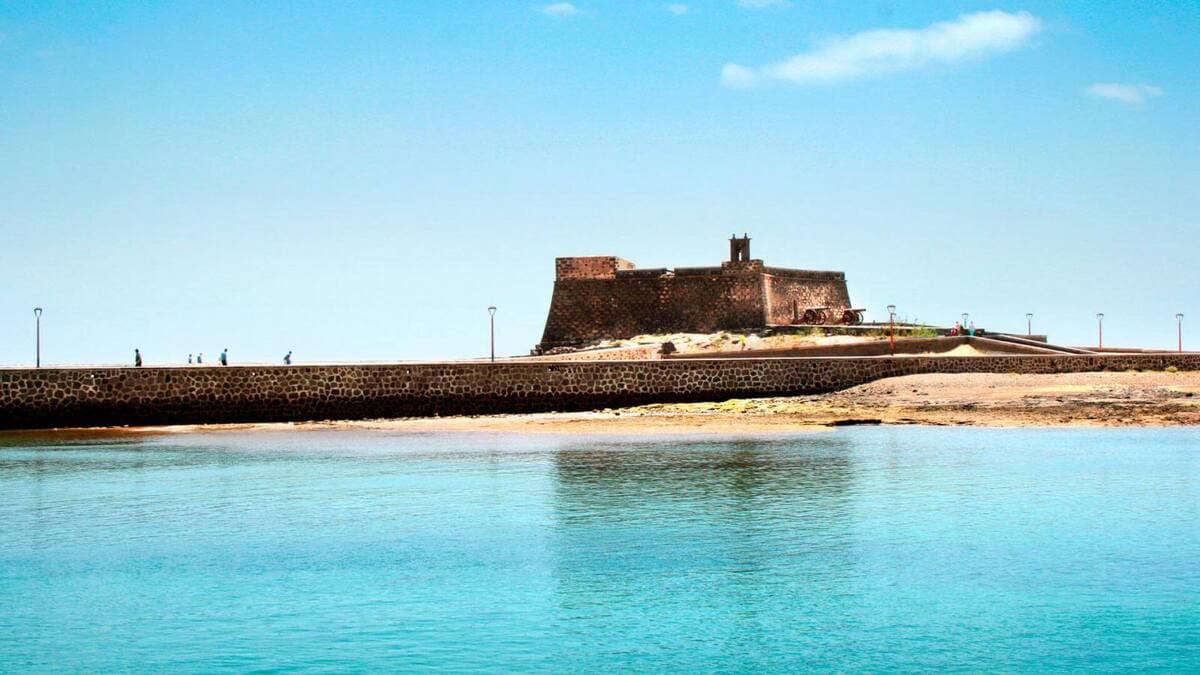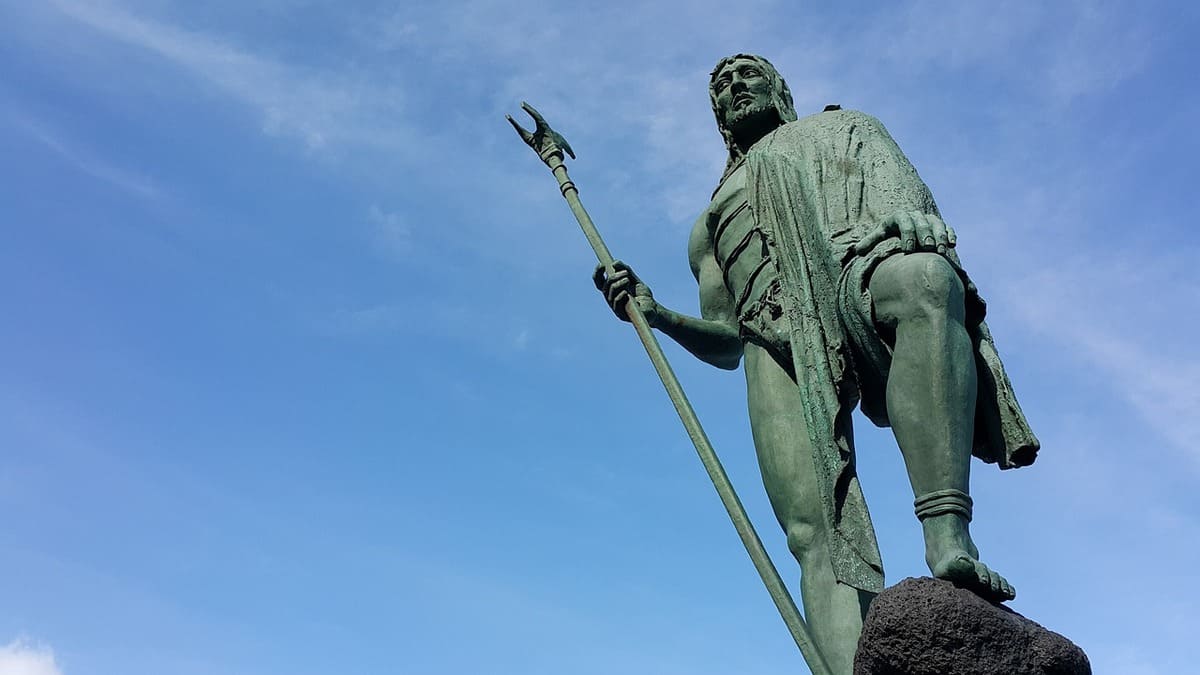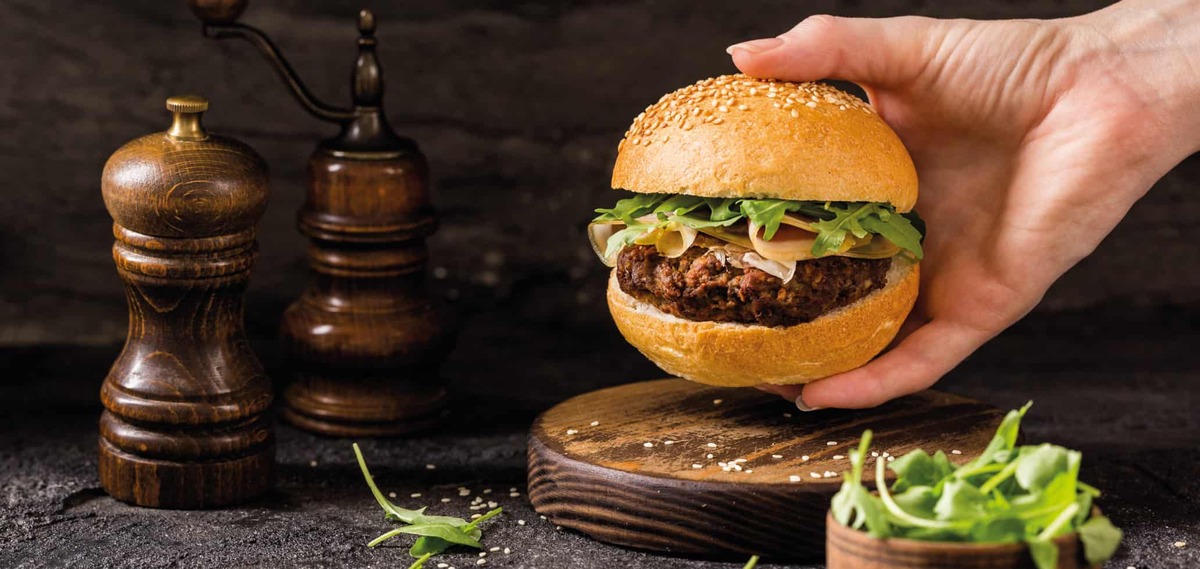A small and very delicate grape, the volcanic malvasia is one of the emblems of the island of Lanzarote, the most cultivated grape on the island, the basic ingredient with which many of its best wines are made and which owes its name to its great adaptation to the volcanic terrain. This grape is exclusive to Lanzarote, as it is not even found tokenistically anywhere else in the world.
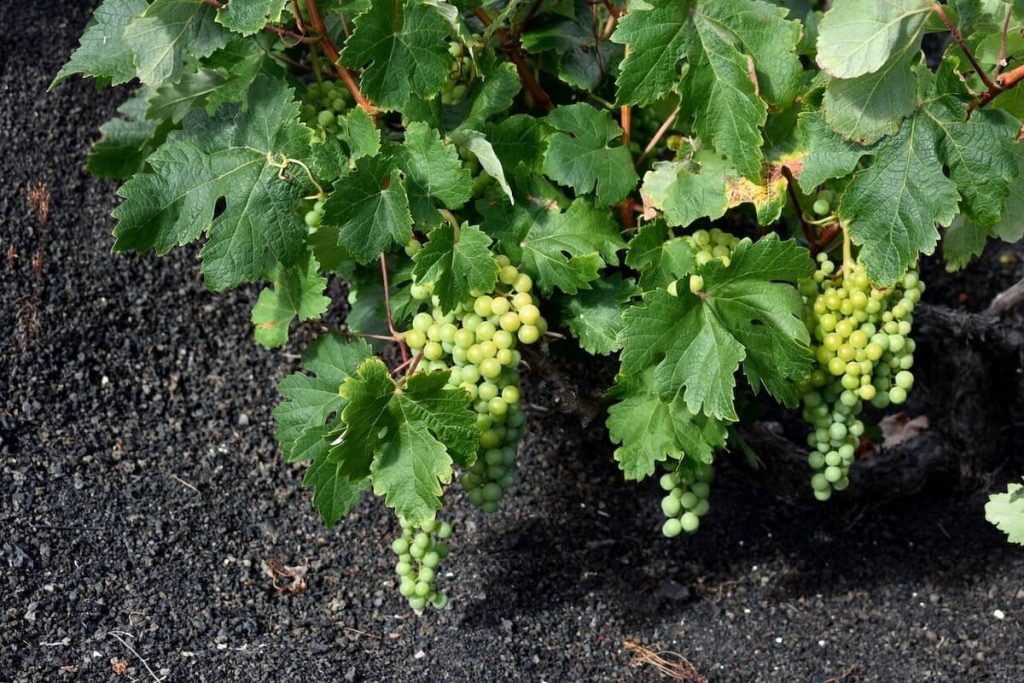
Origin and varieties
Originally from Greece, the Malvasia grape (without surnames) is a very aromatic grape. It is produced in various parts of the world, and in Spain there are six varieties: the Canary Islands, Castile and Leon, La Rioja, Balearic Islands, Catalonia and Valencia. The variety we are dealing with today, the volcanic malvasia, is probably a mixture of three types of grape: the Greek malvasia, the aromatic malvasia from Catalonia (especially from Sitges) and the local marmajuelo grape. Although it has been related to it, it is actually different from the malvasía de La Palma, more similar to the malvasía de Sitges, according to the latest studies. This aromatic malvasia accounts for 40% of the malvasia cultivation in the Canary Islands, with the volcanic malvasia being the predominant one, with 60%.
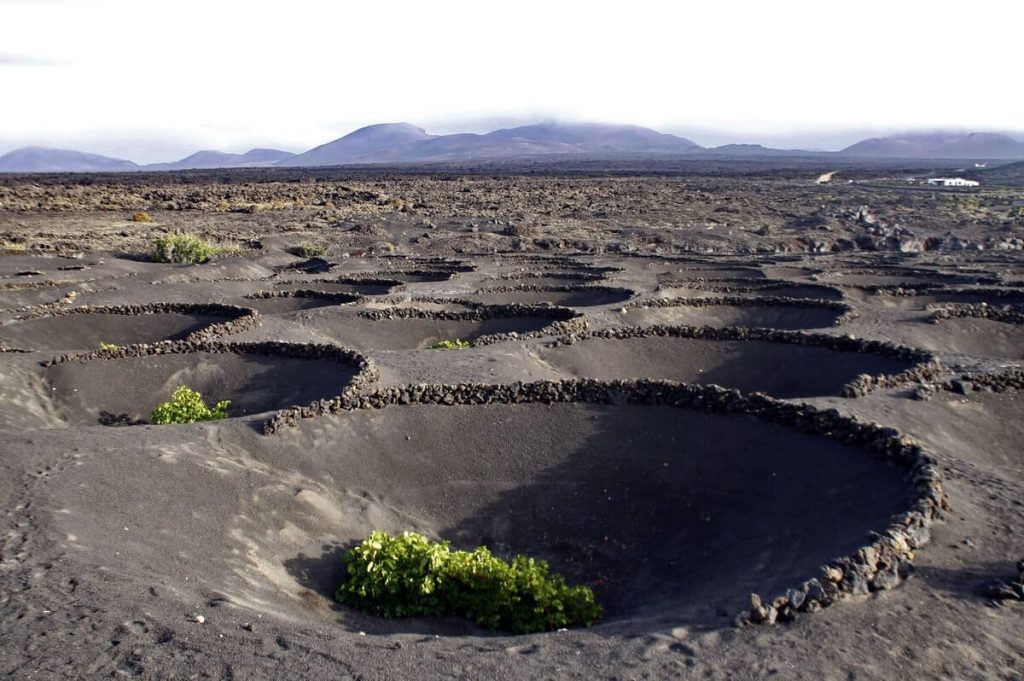
The Timanfaya explosion
The explosion of the Timanfaya volcano on 1 September 1730 lasted no less than six years, and its lava covered a quarter of the island of Lanzarote. Eleven villages disappeared, and those that remained were abandoned by most of their inhabitants. But the few villagers who remained discovered a discovery that would change the island's agriculture forever: the land, used to growing sugar cane and now unusable for this task, turned out to be very, very fertile in the areas where the layer of volcanic ash was thinner.
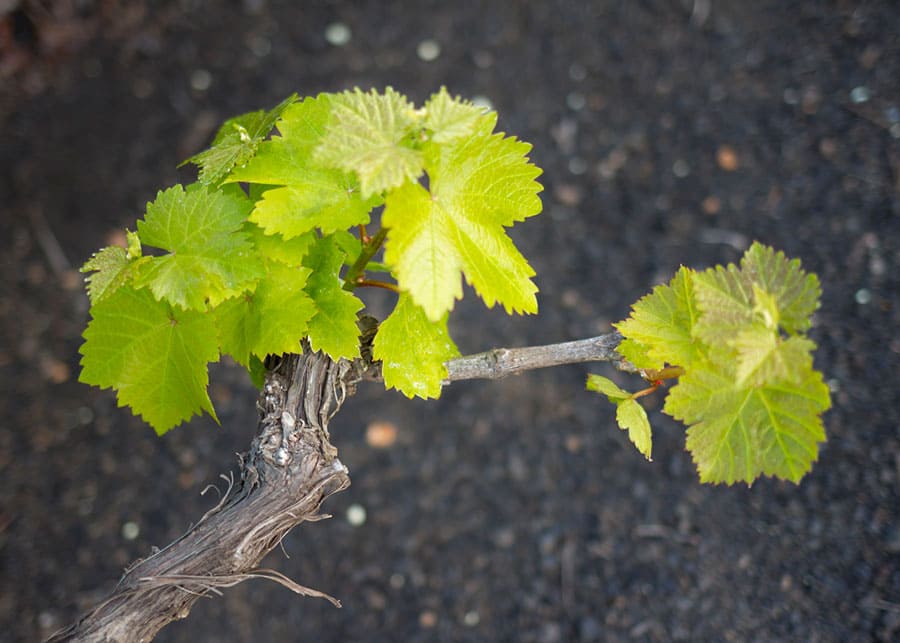
... And the discovery after the explosion
The Lanzarote people proceeded to remove the volcanic sand, looking for the old soil, which after being dug and sown was covered again with pyroclasts. The only thing left to do was to protect the sown ground from the wind was to build circular walls. The sand filtered the night dew, so that the haze could no longer dry out the plants. A soil in which thermoregulation was achieved and in which humidity was preserved: fertility was assured.
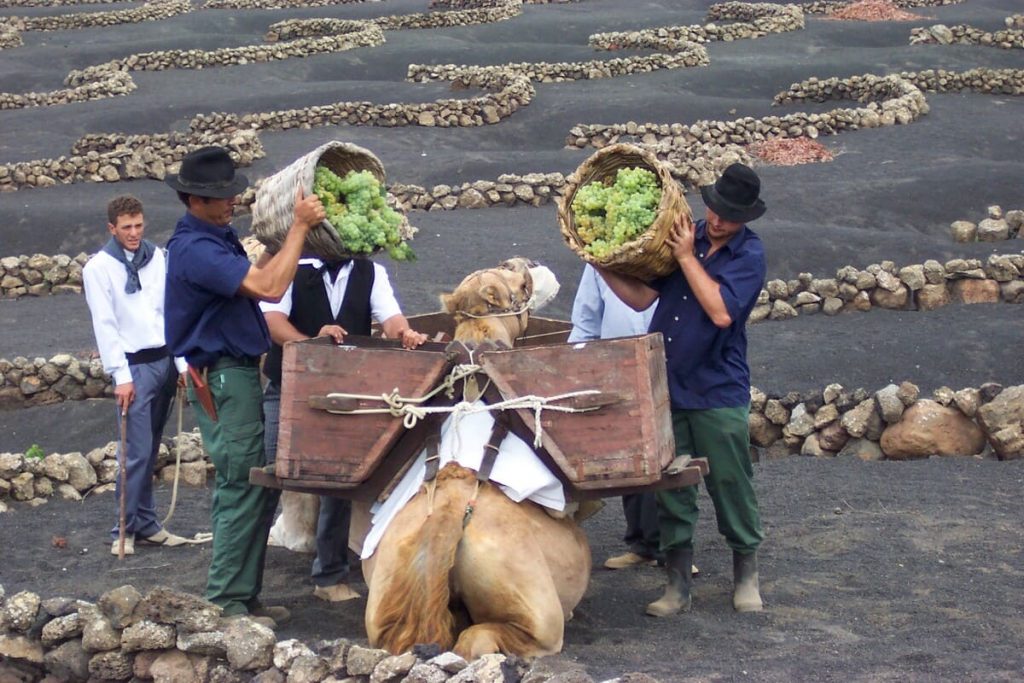
Labour and wine
The malvasia grape cultivation is completely handmade. From the digging of the pits, which are then covered with pyroclasts, through the construction of the stone walls, to the planting of the vines and the harvesting of the grapes. No mechanisation is possible.
The result are unique wines, transparent in colour, with golden reflections, very aromatic and intense wines, like the grape itself: with a fruity aroma and flavour, and there are four varieties: dry malvasía, sparkling malvasía, semi-sweet malvasía and sweet malvasía, the best known. As for the pairing of the volcanic malvasía, we can say that it goes wonderfully with fish and seafood, and that it is a very good accompaniment to fresh cheeses (if they are from the Canary Islands, all the better), potatoes with mojo and any dessert.

The volcanic malvasia vineyards in Lanzarote
Volcanic malvasia vineyards are found throughout the length and breadth of the island of Lanzarote, although the most typical areas are those of La Geria, Tías-Masdache, San Bartolomé, Tinajo (all of them in the protected area of the La Geria National Park) and the Ye-Lajares area, located in the north of the island. Thirteen wineries belong to the Denominación de Origen Vinos de Lanzarote, including volcanic malvasía wines. This D.O. was created in 1993.
We cannot fail to mention, among these wineries, the legendary Bodega El Grifo, the oldest winery in the Canary Islands and one of the ten oldest in the whole country (it was created in 1775), which makes very good wines from volcanic malvasia grapes from its estate.
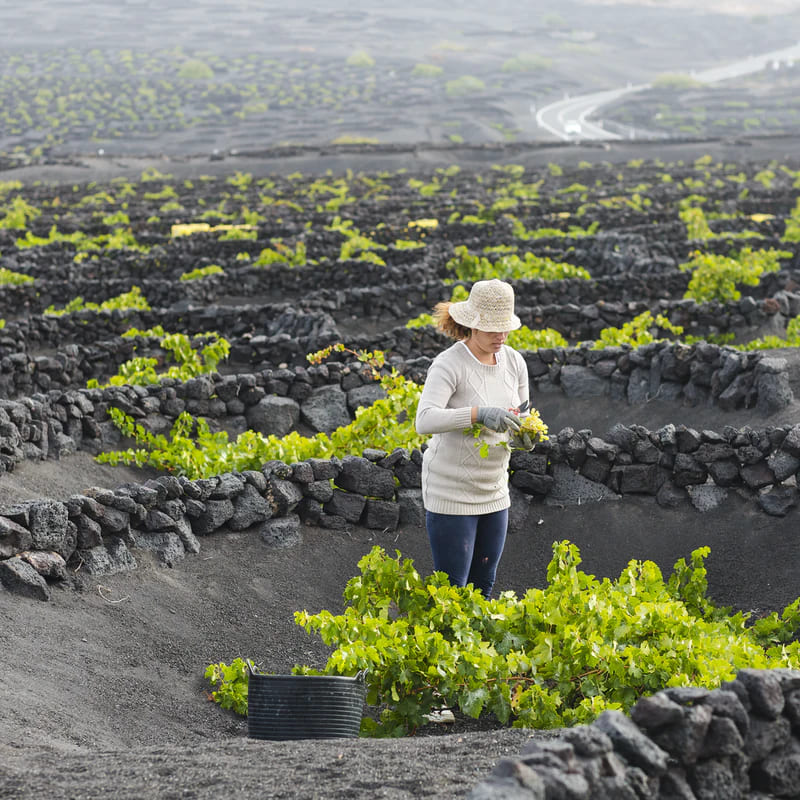
... And the volcanic malmsey vinegar
We must not leave without mentioning a novel product that is also made from the volcanic malvasia of Lanzarote: volcanic malvasia vinegar. The entrepreneur Fernando Arráez Bravo has created a very special vinegar in Arrecife, marketed under the name of "Lágrima de malvasía volcánica", of great quality and in three varieties: basic vinegar with a clean tone, vinegar aged in barrels, caramelised and balsamic vinegar, with a dark tone, vinegars with a maximum acidity of 6% and a minimum presence of sulphites. A gourmet vinegar endorsed by the prestigious chef Martín Berasategui. From Marca Canaria we wish long life to the volcanic malvasia.
Photo credits: bodegaslaflorida.com, saborealanzarote.com, bungalowsplayafamara.com, innovagri.es, tiquets.com.
